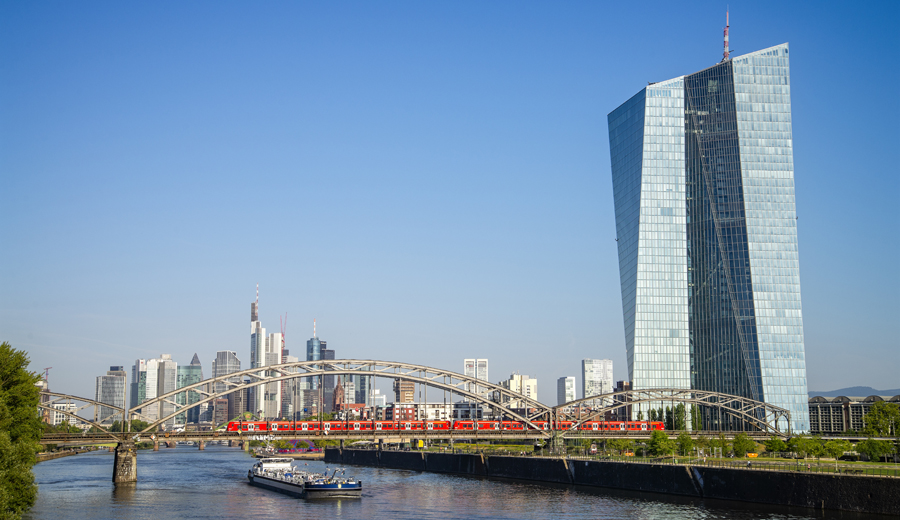
Beyond Mobility: How Sustainable Cities can scale their Impact on Decarbonisation
As cities strive to meet net zero carbon targets, green mobility has become a priority.
Yet new technology, real estate and human-centric city planning are equally essential if we are to succeed in the transition to a more sustainable world. Planning cities that are more livable, energy-efficient and resilient to environmental change is a challenge that will require broader thinking. In this blog post, Martina Williams, Head of JLL Work Dynamics DACH and CEE at JLL, DACH & CEE, describes, how sustainable cities can scale their impact on decarbonisation.
SMART BUILDINGS ENABLE SUSTAINABLE CITIES
Technology that captures information on how people use urban spaces is vital. For cities to harness the vast amounts of data that can deliver such insights at large scale, buildings need to be digitally connected.
Many buildings already make use of occupancy sensors to optimise energy use, while air quality sensors are increasingly critical to ensure ventilation meets health standards. At the same time, the pandemic has accelerated adoption of technology that delivers real-time information on what people need and want, creating demand among companies for flexible, tech-enabled real estate.
Smart buildings that can share with each other real-time data on space usage and resource consumption could catalyse the energy and carbon efficiency that is so urgently needed in the built environment. However, regulatory hurdles, security concerns and a lack of standardisation often hinder efforts to scale such technological capabilities to city level, while also limiting potential for the scaling of mobility schemes.
REAL ESTATE KEY IN THE DRIVE FOR ECONOMIC AND ECOLOGICAL VALUE
Given that carbon emissions from buildings make up between 60 to 70 percent of emissions in urban centres, real estate must be a pillar of cities’ decarbonisation strategies. Retrofitting work, from heat pumps for energy efficiency to photovoltaic solutions, may not sound as glamourous as mobility innovation such as electrified public transport, but at scale can play a major role in cutting emissions.
The real estate industry is now undergoing a digital transformation that could be the key to developing smart networks of truly connected buildings, enabling large-scale data insights that can drive decarbonisation across cities.
The good news is that real estate investors and corporate owners of buildings now recognise the need to make buildings smarter and more sustainable, in response to rising demand from large corporate occupiers who have publicly made their own net zero commitments. These market forces are likely to soon impact smaller property owners too, creating a blanket premium on spaces that meet higher environmental standards.
Investors and corporate building owners already value more highly those buildings with a clear roadmap for cutting emissions, according to JLL research. They now need to recognise the importance of property technologies that contribute to the smart, net zero city. By doing so, investors can help bring into the fold technological solutions that transform cities’ digital ecosystems and enable data-driven decarbonisation efforts.
DESIGNING CITIES FOR HUMANS
Social impact is a vital aspect of the drive to decarbonise cities. In these post-pandemic years, cities that attract residents and investment will be those that support wellbeing, happiness and productivity.
It’s why city planning must consider the human experience. Amongst other concepts, a greater focus on this is emerging within mixed-use developments. Major urban transformation schemes can bring in new approaches to placemaking, prioritising sustainability alongside inclusiveness and digitization.
This will be vital in the drive to reimagine urban centres as biodiverse, safe and multifunctional spaces that attract communities to gather and connect. Holistic governance that oversees entire areas can help ensure equitable access to these opportunities – and ultimately nurture diverse, dynamic communities with long-term value for people and cities.
PUBLIC-PRIVATE COLLABORATIONS AND PARTNERSHIPS
Just as key is the need to integrate sustainability into city planning – something that will require strong co-creation and collaboration between civic authorities and real estate developers. While governments can provide incentives and education to encourage innovation and investment in retrofitting and sustainability technologies, many property groups have substantial knowledge and skills that can be shared with those who are earlier in their decarbonisation journey.
People and businesses are increasingly likely to favour greener cities, while 65 percent of real estate investors say they prioritise investing in cities with progressive climate policies.
In the years to come, assessments of a city’s real estate potential will go beyond traditional measures like Gross Domestic Product (GDP), employment and population statistics to consider innovation and talent pools as metrics that reflect a city’s livability and sustainability. In China, the city of Shenzhen has been moving from GDP to Gross Ecosystem Product (GEP) as its accounting system to measure the city’s development and drive policy, with its first annual GEP figure due to be produced this year.
We are in a crucial decade for taking climate action. Addressing the impact of real estate will be the engine for lasting changes that create – and preserve – the value in our built environment.
Comments
No Comments


